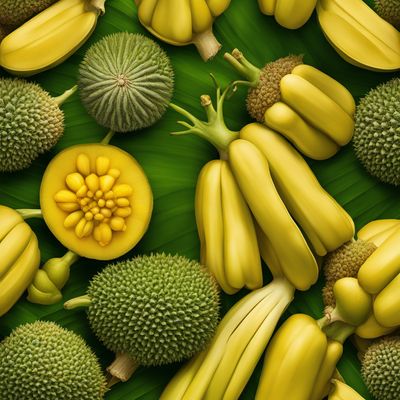
Ingredient
Other species of genus Artocarpus, not elsewhere mentioned
Artocarpus Beyond the Ordinary: Unveiling the Hidden Gems
Other species of genus Artocarpus encompass a diverse range of fruits, including breadfruit, jackfruit, and cempedak. These fruits are known for their large size, distinctive appearance, and rich flavors. With a firm yet tender texture, they can be enjoyed raw or cooked, adding a tropical touch to both sweet and savory dishes. The fruits are characterized by their green or yellowish skin, which encases a fleshy, aromatic, and often fibrous interior. Their unique taste profiles range from sweet and tropical to subtly tangy, making them a delightful addition to a wide array of culinary creations.
Origins and history
The genus Artocarpus originates from Southeast Asia and the Pacific Islands, where it has been cultivated for centuries. Breadfruit, for example, has a rich history in Polynesian cultures, where it served as a staple food source. Jackfruit, on the other hand, has its roots in India and has been widely embraced in South and Southeast Asian cuisines. These fruits have since spread to various parts of the world, becoming beloved ingredients in both traditional and modern dishes.
Nutritional information
These fruits are packed with essential nutrients, including dietary fiber, vitamin C, potassium, and antioxidants, while being relatively low in calories.
Allergens
While rare, some individuals may have allergies to certain species of genus Artocarpus, particularly jackfruit. It is advisable to exercise caution and consult with a healthcare professional if you suspect an allergy.
How to select
When selecting other species of genus Artocarpus, look for fruits that are firm, with intact skin and minimal blemishes. The skin should have a vibrant color and yield slightly to gentle pressure. Additionally, a pleasant aroma can indicate ripeness and flavor.
Storage recommendations
Other species of genus Artocarpus are best stored at room temperature until fully ripe. Once ripe, they can be refrigerated for a few days to extend their shelf life. It is important to note that refrigeration can alter the texture, so it is advisable to consume them promptly.
How to produce
Growing other species of genus Artocarpus requires a tropical or subtropical climate. They can be cultivated from seeds or propagated through grafting. However, due to their specific requirements and long maturation periods, it is recommended to consult local agricultural experts or nurseries for guidance.
Preparation tips
To prepare other species of genus Artocarpus, start by cutting the fruit into manageable pieces. For breadfruit, remove the skin and core, then boil, steam, or roast the flesh until tender. Jackfruit and cempedak can be enjoyed ripe, with the flesh easily separated from the fibrous core. They can be eaten as is, added to curries, stir-fries, or desserts, or even used as a meat substitute in vegetarian dishes due to their meaty texture.
Culinary uses
Other species of genus Artocarpus are incredibly versatile in the culinary world. Breadfruit can be used as a potato substitute in various dishes, such as fries or mashed. Jackfruit and cempedak are often used in curries, stews, and desserts, adding a unique tropical flavor and texture. They can also be marinated and grilled for a delicious vegan pulled pork alternative.
Availability
Other species of genus Artocarpus are commonly available in tropical regions, including Southeast Asia, the Pacific Islands, and parts of South America. They can also be found in specialty grocery stores or markets in other regions with a diverse selection of tropical fruits.

